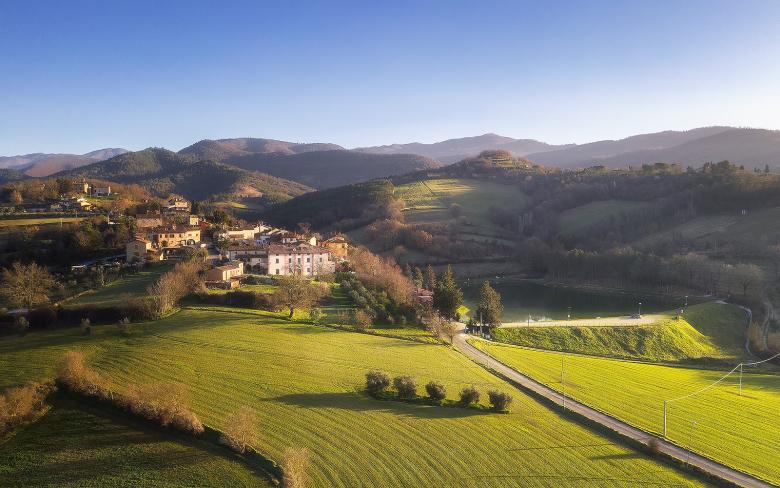Castello Bufalini - San Giustino
Il Castello Bufalini emerge nell’abitato di San Giustino (Perugia) ed è un ammirevole esempio di dimora storica signorile. Adibito a museo, dopo l’acquisizione da parte dello Stato nel 1988, è circondato da un elegante giardino all’italiana con rari esemplari di rose. La struttura nasce come fortezza privata di una famiglia ghibellina di San Sepolcro e dopo la battaglia di Anghiari (1440) diventa avamposto militare di Città di Castello, ben presto distrutto per ordine della Repubblica fiorentina.
Passato di proprietà nel 1487 a Niccolò di Manno Bufalini, vennero intrapresi lavori di ricostruzione su progetto dell'architetto romano Mariano Savelli e su indicazioni di Giovanni e Camillo Vitelli, uomini d'armi ed esperti in architettura militare. Assunse l'aspetto di una fortezza, a pianta quadrata irregolare con quattro torri agli angoli, di cui una di maggiori dimensioni, la torre maestra; un ampio fossato con acqua la circondava.
La storia dell'edificio è legata indissolubilmente a quella della famiglia Bufalini, che vantava personaggi affermatisi in ambito ecclesiastico, letterario e giuridico. A partire dagli anni Trenta del XVI secolo, la fortezza fu trasformata in residenza nobiliare rispondente a precise esigenze artistiche, sociali e culturali, secondo la volontà di Giulio I e del fratello, l'Abate Ventura Bufalini. Benché sia stato l'interno a subire maggiori modifiche, con la creazione di ampie sale distribuite attorno ad un cortile con due lati porticati, risale a quel periodo l'inserimento in facciata del loggiato e l'ingresso monumentale in posizione centrale.
Dall'esterno rimase ben visibile l'originaria struttura militare dell'edificio. Il progetto del palazzo fu opera dell'architetto fiorentino della cerchia dei Sangallo Giovanni di Alesso, detto Nanni Unghero, ma i lavori furono ultimati con l'intervento del Vignola attorno al 1560.





















.jpg/ccb33cc7-ccc5-8b2b-1ed4-deda6003f4f3?width=456)










.jpg/57ea8c70-fb29-322f-b8b4-7bbaddb11831?width=780)


